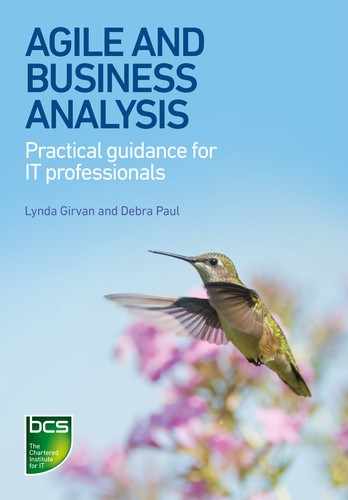Figure 1.1 Business Analysis Maturity Model™
Figure 1.2 Business analysis activities
Figure 2.1 Waterfall development approach
Figure 2.2 The main elements of agile
Figure 2.3 The manifesto for agile software development
Figure 3.1 Three BA perspectives
Figure 3.2 Pre-project analysis work
Figure 3.4 Pre-project business analysis
Figure 3.5 An Agile Manifesto for business improvement
Figure 3.6 Aspects of systems thinking
Figure 3.7 Principles of Lean thinking
Figure 3.9 Organisation versus customer value perception
Figure 4.1 Six core agile values for business analysts
Figure 4.2 Mehrabian’s elements of communication
Figure 4.3 Tuckman’s stages of group development
Figure 4.5 Iterative development adapted for process improvement
Figure 4.6 External and internal sources of change
Figure 5.1 Example of a Kanban board
Figure 6.1 The iterative nature of business environment and strategy analysis
Figure 6.2 Informal model of a business situation
Figure 6.5 Value chain for training service
Figure 6.6 BAM of a training business system
Figure 6.7 Business process model for bespoke course development
Figure 6.8 Business use case model
Figure 6.9 Example of business epics
Figure 6.10 Template for a business epic card
Figure 7.1 The T-shaped BA professional
Figure 7.2 Example of different types of T-shaped professionals in a development team
Figure 7.3 Types of business customer
Figure 7.4 Organisation versus customer value perceptions
Figure 7.6 Power/interest grid
Figure 7.7 The relationship between stakeholders and roles
Figure 7.8 Business/governance roles on change projects
Figure 7.9 Architectural domain roles on change projects
Figure 7.10 External stakeholder roles on change projects
Figure 7.11 Stakeholder roles within the development team
Figure 8.1 Organisational chart showing a high-level business process
Figure 8.2 Functional decomposition of the goal, ‘Open a café’
Figure 8.3 Goal decomposition of the goal, ‘Open a café’
Figure 8.4 Decomposed goals for the ‘Serve hot drinks’ goal
Figure 8.5 Cockburn’s levels of goals
Figure 8.6 Examples of different goal levels
Figure 9.1 Calculation for WSJF
Figure 9.2 Prioritised list of requirements or work items using MoSCoW
Figure 9.3 Release schedule showing MoSCoW priorities
Figure 9.4 Decomposed requirements/goals with priority levels
Figure 9.5 Questions used during prioritisation
Figure 10.1 Requirements engineering framework
Figure 10.2 Slices of requirements engineering applied iteratively
Figure 10.3 A suggested FMM plan for the requirements approach
Figure 10.4 Traditional approach to requirements engineering
Figure 10.5 An agile approach to eliciting requirements
Figure 10.6 A low fidelity throwaway prototype
Figure 10.7 Business analyst standing between customer and development team
Figure 10.8 The business analyst role in facilitating collaboration
Figure 11.1 IT systems and processes in ‘the simplified FMM’
Figure 11.2 The value of modelling
Figure 11.3 Using models to provide context from business to iteration
Figure 11.4 User analysis matrix
Figure 11.5 Approach for user role development workshop
Figure 11.6 Role card description
Figure 11.7 Personas for customers of a holiday company
Figure 11.8 Persona for a customer of a training provider
Figure 11.9 Misuse character card
Figure 11.10 Context diagram for course booking system
Figure 11.11 Showing ‘use’ on a context diagram
Figure 11.13 Discovered use case
Figure 11.14 Briefly described use case
Figure 11.15 Fully described use case
Figure 11.16 Activity diagram for use case
Figure 11.17 ‘As is’ user journey
Figure 12.1 The simplified Functional Model Map
Figure 12.2 Example user story
Figure 12.3 Example user story ‘confirmation’
Figure 12.4 Approach to developing scenarios
Figure 12.6 Story map backbone
Figure 12.7 Story map populated with decomposed stories
Figure 12.8 Using the story map to define deliverables
Figure 13.1 Types of requirement
Figure 13.2 Three different views of the backlog
Figure 13.3 Example requirements catalogue definition of access requirements
Figure 13.4 Visible non-functional requirements and constraints
Figure 13.5 Hierarchy of requirements
Figure 13.6 Decomposed business use case into system use cases
Figure 13.7 Decomposed business use case showing external actor component
Figure 13.8 Hierarchy of use cases leading to user story development
Figure 14.2 Relative sizing using jelly beans
Figure 14.3 Planning Poker® cards
Figure 14.4 Planning Poker® process
Figure 15.1 Cycle of an iteration
Figure 15.2 Iteration activities
Figure 15.3 The layered approach to iterations
Figure 15.4 The relationship between iterations, releases and goals
Figure 15.5 Calculating team velocity
Figure 15.6 Backlog refinement activities
Figure 15.8 Example of a burndown chart showing story points
Figure 15.9 Example of a burndown chart showing remaining effort
Figure 15.10 A burnup chart showing progress of iterations
Figure 15.11 Common retrospective questions
Figure 16.1 Scott Ambler’s ‘Software Development Context Framework’
Figure 16.2 Levels of influence when adopting agile
Figure 16.3 Key characteristics of an agile business analyst
